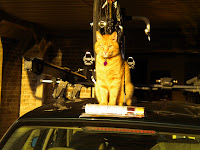My What Big Teeth You Have!
(And How Can I Avoid Them?)
 |
| courtesy of invisiblefence.com |
How do you avoid getting bit by a dog?
Young children should always be supervised with a dog, even the family dog. Experts agree that no child under school age should be left alone with any dog for even one moment, no matter how gentle the child or the dog.
Young children should always be supervised with a dog, even the family dog. Experts agree that no child under school age should be left alone with any dog for even one moment, no matter how gentle the child or the dog.
Is it safe for a child to be the one who walks the dog?
It puts the child at risk of getting injured when another dog attacks the dog being walked. Children should not walk the family dog unsupervised until they are adult sized, and using good judgment.
It puts the child at risk of getting injured when another dog attacks the dog being walked. Children should not walk the family dog unsupervised until they are adult sized, and using good judgment.
 |
| courtesy of invisiblefence.com |
An essential safety rule for children with any dog is to ask the responsible adult for permission before approaching or touching the dog. If there is no adult to ask, leave that dog alone.
Many dogs instinctively protect territory. This can include a car the dog is sitting in, a yard the dog is confined in (this includes electric fenced yards-which a child can wander in very easily) or when the dog is on a walk with the owner. Never approach an unfamiliar dog, especially if it is tied up or in its yard. A dog who doesn't know you may see you as a threat. Never turn your back to a dog and run away. A dog's instinct will be to chase you down and catch you, just like it would do with its prey.
 |
| courtesy of safedogobedienceadvice.com |
The same dog might be safe for a child to pet when the dog is on a leash but not in its yard, or vice-versa. Some children make the problem worse by deciding that a dog is a mean dog (the dog next door who barks at everything, Grandma’s little lap dog who barks when the kids run around the house, etc.) and they taunt it. Soon the dog is particularly protective against children in that situation. The child who gets bitten may be another child, not the one who did the teasing.
Don't disturb a dog, even if you know the dog, while it’s sleeping, eating, or playing with a toy, especially if it’s a flavored chew toy, which in its mind equals food. Always ask an adult if you can play with the dog with its toys.
Don’t disturb a momma dog with her puppies. She might try to protect them from you.
And when you do pet a dog, let him see and sniff you first. Offer a closed hand from below the chin, not a hovering hand over the dog’s head. An overhead gesture can frighten a fearful dog and he may try to protect himself. Don’t wiggle your fingers in a dog’s face or yank your hand away either. The dog may bite your fingers in play, thinking your fingers are prey.
What to do if you think a dog may attack?
If you are approached by a dog who may attack you, follow these steps: Remain motionless, and avoid eye contact with the dog. Attempt to slowly back away from the dog to safety. Resist the urge to scream and run away. If the dog does attack, in a firm voice, say, “NO!” and offer him your purse, grocery bag, jacket, glove, shoe, bicycle, or anything that you can distract the dog with. If you are knocked to the ground, curl into a ball tucking your face into your knees, and try to cover the back of your neck and ears/cheeks with your arms. Stay as still as possible. Try not to scream or roll around.
What to do if I you bitten by a dog?
If you are bitten by a dog, as soon as you can safely get away, immediately wash the wound thoroughly with soap and warm water, and then seek medical care. Report the bite to your local animal control agency. Tell the animal control officer what the dog looked like, and if you know his owner's name and/or address. If the dog is a stray, tell the officer where you encountered the dog, and in which direction he went.
What about cats?
 |
| courtesy of petstyle.com |
Do not tease a cat with your fingers. Do not pick up a cat against its will. Do not touch a cat outdoors that you come across unless the owner is present and says that it is safe to do so.
How to interpret cat language: a cat swishing its tail, a cat hissing or growling, a cat with big pupils, a cat with its ears flat to its head, or a cat who has its back hunched: these are cats that are saying, “back off!” The same guidelines apply if you get bitten by a cat as by a dog.
Blog by:
Dr. Dana Lewis
Dr. Dana assists families with Pet Hospice and In Home Euthanasia in the Raleigh North Carolina area (Raleigh, Durham, Chapel Hill and the greater Triangle, as well as Wake, Durham, Orange, and Chatham counties.)

































